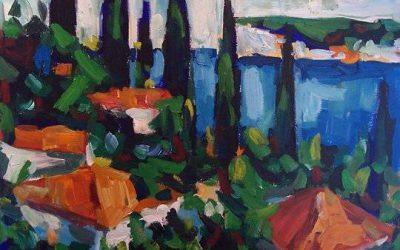Only legends tell about the foundation of Dubrovnik. Situated on the trade route between Europe and Middle Asia, already used by the Celtic tribes, it was certainly a Greek colony. The endemic Illyrians and Slavic tribes founded the village “Dubrovnik” on the slope of the Saint Serge mountain. They named it after the old word “dubrava” that means “green oaks forest”, the original vegetation of the northern Mediterranean. The romans built a fortress on the rock in front of this village and called it “Ragusa”. The two settlements connected with bridges and finally with land and rocks at the 11th century, creating on water ground one of the most beautiful main street in the Mediterranean, “Stradun”, and the magnificent city walls as we know them today. But the 2 names persisted.
First a free city under the influences of the Byzantine Empire and the Republic of Venice, Dubrovnik evolved as an independent state between the 14th and the 19th century. The prosperity of the city was historically based on maritime trade. As the capital of the Republic of Ragusa, it achieved a high level of development. Particularly during the 15th and 16th centuries, as it became notable for its wealth and skilled diplomacy. At the same time, Dubrovnik became a cradle of Croatian literature and arts.
The market moving to the Atlantic from the 17th century on, Dubrovnik lost its key position and declined. Dubrovnik was among the first countries in Europe to recognize the Unite States of America, but its efforts to maintain were vain. Napoleon abolished the Republic in 1808.
After its fall, the city integrated Croatia and the Austrian Empire, later was part of Yugoslavia. Dubrovnik developed as one of the first touristic destination in the Adriatic Sea and the Mediterranean. In 1979, Dubrovnik is classified as UNESCO World Heritage.
In 1991, during the disintegration of Yugoslavia, Dubrovnik was besieged for 7 months and suffered significant damage from shelling. After undergoing restoration works, in the 1990’s and early 2000’s, it re-emerged as one of the Mediterranean’s top tourist destinations.


